| Upcoming Webinar Series |
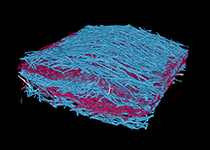 |
| X-ray Computed Tomography for Materials Science |
Join us on April 3rd for the first in a series of webinars on X-ray Computed Tomography for Materials Science. Learn about the principles of the X-ray CT technique and how it can be applied to a wide range of materials. Find out how to create high-resolution images of your material and visualize your samples in three-dimensions.
For more information > |
|
| Powder diffraction, thin film diffraction, SAXS, in-plane scattering |
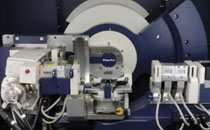 |
| SmartLab® |
The
SmartLab is the most novel high-resolution X-ray diffractometer
available today. Perhaps its most novel feature is the SmartLab
Guidance software, which provides you with an intelligent interface
that guides you through the intricacies of each experiment. It is like
having an expert standing by your side.
For more > |
|
| Interested in publishing your work in The Bridge? |
 |
| Publish Your Work Here |
| The Bridge now welcomes manuscripts, communications, and papers that describe techniques and applications of all forms of X-ray fluorescence (XRF) and X-ray diffraction (XRD, including SAXS) that are of interest to fellow scientists in industry, academia, and government. Manuscripts, in PDF format, are only accepted with the understanding that they are not commercial in nature. Authors are responsible for all statements made in their work. If illustrations or other material in a manuscript have been published previously, the author is responsible for obtaining permission to republish. Please email copy to the editor.
|
|
Benchtop total reflection
X-ray Fluorescence (TXRF) spectrometer |
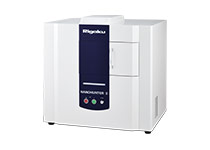 |
| NANOHUNTER II |
| The new, next generation Rigaku NANOHUNTER II benchtop total reflection X-ray fluorescence (TXRF) spectrometer enables high-sensitivity ultra-trace elemental analysis of liquids down to parts-per-billion (ppb) concentrations. Total reflection X-ray fluorescence spectroscopy is a method by which an incident beam of X-rays just grazes the sample, delivering low-background noise, high-sensitivity measurement of ultra-trace elements.
For more > |
|
| Video of the Month |
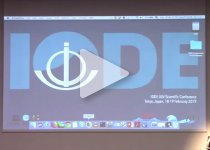 |
| IODE XXV – Tokyo, Japan |
The 25th Session of the IODE Committee was held in Tokyo, Japan between Tuesday, February 19 and Friday 22, 2019. The programme “International Oceanographic Data and Information Exchange” (IODE)
of the “Intergovernmental Oceanographic Commission” (IOC) of UNESCO was established in 1961. Its purpose is to enhance marine research, exploitation and development, by facilitating the exchange of oceanographic
data and information between participating Member States, and by meeting the needs of users for data and information products.
For more > |
|
|
|
| Useful Link of the Month |
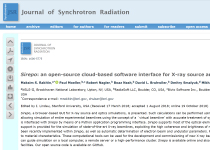 |
|
An open-source cloud-based software interface for X-ray source and optics simulations
|
Sirepo, a browser-based GUI for X-ray source and optics simulations, is presented. Such calculations can be performed using SRW (Synchrotron Radiation Workshop), which is a physical optics computer code, allowing simulation of entire experimental beamlines using the concept of a 'virtual beamline' with accurate treatment of synchrotron radiation generation and propagation through the X-ray optical system. SRW is interfaced with Sirepo by means of a Python application programming interface. Sirepo supports most of the optical elements currently used at beamlines, including recent developments in SRW. In particular, support is provided for the simulation of state-of-the-art X-ray beamlines, exploiting the high coherence and brightness of modern light source facilities. New scientific visualization and reporting capabilities have been recently implemented within Sirepo, as well as automatic determination of electron beam and undulator parameters. Publicly available community databases can be dynamically queried for error-free access to material characteristics. These computational tools can be used for the development and commissioning of new X-ray beamlines and for testing feasibility and optimization of experiments. The same interface can guide simulation on a local computer, a remote server or a high-performance cluster. Open source code is available on GitHub.
For more >
|
|
| Planning to submit a grant? |
 |
| Rigaku is happy to assist |
| If you are planning on submitting an instrument grant proposal, Rigaku will be happy to assist you. We can help you determine the correct instrument and configuration best suited for your analytical needs.
Start the process >
|
|
| Rigaku's Materials Analysis eNewsletter, The Bridge |
 |
| Join us |
| Each month, Rigaku distributes two eNewsletters: The Bridge, which focuses on Materials Analysis, and Crystallography Times, which concentrates on X-ray crystallography.
Join us >
|
|
|
|
Welcome
In April we have three big events: ACS Spring in Orlando, FL (3/31-4/4, booth #537), MRS Spring in Phoenix, AZ (4/22-4/26, booth #205), and Analytica Vietnam in Ho Chi Minh City (4/3-4/5). Please come by to see what's new and visit. A complete list of all upcoming events can be found here.
In early April we welcome you to join us for the first in a series of Webinars on X-ray CT for Materials Science. Well known in the medical arena, X-ray Computed Tomography and the technology behind it has advanced rapidly, putting the analysis of all types of materials within easy reach. Register today to learn more about this technique and its potential applications.

Rigaku Corporation was pleased to introduce a new unified brand identity at the 70th annual Pittsburgh Conference on Analytical Chemistry and Applied Spectroscopy (Pittcon 2019), held last week. Our booth (shown above) highlighted the new corporate unified brand. As white light is a combination of all colors, so the new white motif, with blue signage, was designed to symbolize all of our operational segments blended together into a global one Rigaku.
As part of our new brand identity, a Rigaku Digital Portal Initiative (R-dpi) was
also launched last week at PittCon, (https://www2.Rigaku.com) in English with neural machine translations for other languages. A state of the art fully responsive design, it features predictive search with faceted results to enable rapid discovery of potential solutions to customer problems.
Our Rigaku Journal article covers ultra-low P, S and Cl in oil
samples. This month's featured XRD technical note discusses the dehydration process of hydrates by XRD-DSC simultaneous measurement under temperature and humidity
control. The EDXRF application note explores the analysis of sunscreen products.
The book review covers Freedom's Laboratory: The Cold War Struggle for the Soul of Science by Audra J. Wolfe . Check out the interesting video of the 25th Session of the IODE
Committee and, as always, the news and papers sections are at the bottom of the page for a taste of the latest developments in materials science..
R.C. Tisdale, Ph.D. – Editor
 |
|
Featured Rigaku Journal Article
Ultra low P, S, and Cl. Analyze elements from
O to U. All on a single benchtop system.
Rigaku Corporation
The benchtop wavelength dispersive X-ray fluorescent spectrometer Supermini200 and its predecessors have been on the market since 2000 and are being used on every continent in the world for research and industrial applications. Since its inception, demands for controlling lower levels of phosphorous (P), sulfur (S) and chlorine (Cl) have been on the rise. To meet these challenges, the Supermini200 is now available with the highly sensitive analyzing crystal RX9 realizing 0.1 ppm lower limit of detections (LLD) for P, S and Cl in hydrocarbon-based samples.
Full article > |
 |
|
XRD Application Note
Observation of dehydration process of hydrate by XRD-DSC simultaneous measurement under temperature and humidity atmosphere
Rigaku Corporation
The crystal systems of pharmaceuticals and foods may change due to factors such as temperature and humidity. The climate of Japan in particular exhibits extreme changes in temperature and humidity, with hot and humid summers, and dry, low-temperature winters, and these are poor conditions as an environment for synthesizing pharmaceuticals or storing foods. Therefore, there is a need to conduct measurement beforehand under various atmospheric conditions, and determine what sort of changes these materials undergo in the actual environment. Thus we evaluated thermal changes and changes in the crystal structure of pharmaceuticals by simultaneously measuring X-ray diffraction (XRD) and differential scanning calorimetry (DSC) while varying humidity.
For more > |
 |
|
EDXRF Application Note
TiO₂ and ZnO in Lotions
Applied Rigaku Technologies
TiO₂ is added to lotions, creams and various cosmetics as a whitening agent and acts as a sunscreen. ZnO is added as a sunscreen and is very effective at blocking UV light. Its concentration is a factor in determining the SPF (sun protection factor) of lotions and creams. ZnO is also a mild astringent with mild antiseptic properties used in lotions and creams to help retain moisture and provide a protective layer to the skin and to prevent diaper rash in baby products. When iron oxide (Fe₂O₃) is also added the TiO₂ (white) and Fe₂O₃ (red) are blended in various proportions to create the many shades of reds and browns in cosmetics, make-up, rouge and lipsticks.
For more > |
 |
|
Book Review
Freedom's Laboratory: The Cold War Struggle for the Soul of Science
By Audra J. Wolfe
Freedom's Laboratory provides a detailed history of science and its role in society during the Cold War. Wolfe takes a deep dive into the role the United States government played in scientific inquiry and discovery around the world in the years following World War II. The Space Race was merely one facet of the heightened, science-related tensions between the capitalist United States and the communist Soviet Union. Read review > |
 |
|
Material Analysis in the News
News for March 2019
March 1, 2019. Materials that have a disordered structure with no regular repeating pattern are described as amorphous. Such materials can be found in nature and also have a variety of applications in technology. However, the disordered nature of these materials makes them more challenging to characterize than crystalline structures. Researchers at The University of Tokyo Institute of Industrial Science have shown that the structure of a particular class of liquids and amorphous materials, known as tetrahedral glass formers, can be understood from experimental measurements.
March 5, 2019. By now everyone will have heard that we are in the midst of an AI revolution in which computers are about to upend the way we live, learn and work. But for Wolfgang Wahlster, the computer scientist who has just ended a 20 year stint as CEO of the German Research Centre for Artificial Intelligence, that greatly underestimates the distance between AI and its human counterpart. We're years away from a game changer in the field, he believes.
March 6, 2019. Jerry Merryman, one of three men credited with
inventing the hand-held electronic calculator, has died at the age of 86. Merryman helped to develop the calculator in the mid-1960s while he was working for American technology company Texas Instruments (TI) alongside James Van Tassel and his boss Jack Kilby — co-creator of the first integrated circuit and Nobel Prize winner.
March 7, 2019. A team of researchers led by the Department of Energy's Lawrence Berkeley National Laboratory (Berkeley Lab) has developed a simple method that could turn ordinary semiconducting materials into quantum machines – superthin devices marked by extraordinary electronic behavior. Such an advancement could help to revolutionize a number of industries aiming for energy-efficient electronic systems – and provide a platform for exotic new physics. The method stacked together 2D layers of tungsten disulfide and tungsten diselenide to create a moiré superlattice.
March 11, 2019. Every year earthquakes worldwide claim hundreds or even thousands of lives. Forewarning allows people to head for safety and a matter of seconds could spell the difference between life and death. University of Tokyo researchers demonstrate a new earthquake detection method
that exploits subtle telltale gravitational signals traveling ahead of the tremors. Future research could boost early warning systems.
March 11, 2019. A research team of experts in atomic physics, nuclear fusion science, and astronomy succeeded in computing millions of highly accurate atomic data of neodymium ions in the Japan-Lithuania international collaboration. This research accelerates studies of a long-standing mystery regarding the origin of precious metals such as gold and platinum in our universe.
March 14, 2019. Happy Pi Day! The value of the number pi has been calculated to a new world record length of 31 trillion digits, far past the previous record of 22 trillion. Emma Haruka Iwao, a Google employee from Japan, found the new digits with the help of the company's cloud computing service.
March 15, 2019. NIMS, the University of Tokyo, Niigata University and RIKEN jointly designed a multilayered metamaterial that realizes ultra-narrowband wavelength-selective thermal emission by combining the machine learning (Bayesian optimization) and thermal emission properties calculations (electromagnetic calculation). The joint team then experimentally fabricated the designed metamaterial and verified the performance. These results may facilitate the development of highly efficient energy devices.
March 15, 2019. Japanese startups demonstrated how to solve societal challenges and make lives easier with innovative technologies at SXSW 2019 (Austin, TX). These startups, part of the government's J-Startup program to incubate globally-competitive startups, are the face of the new business environment in Japan as a global innovation hub. Specifically tailored to encourage invention and creative problem-solving, the J-Startup program produces startups that are using human imagination to bring greater joy, better environmental stewardship, and groundbreaking innovation to industry and everyday life.
March 18, 2019. Something that emits no light and is 13 billion light-years away is, by definition, pretty hard to spot, but a team using Japan's Subaru 8-meter telescope located atop Mauna Kea in Hawaii has found 83 giant black holes from that epoch, when the universe was 5% of its current age, greatly increasing the number known. The discoveries are all supermassive black holes, the type that lurk at the centers of galaxies weighing millions or billions of times as much as our sun.
March 18, 2019. Japan's Hayabusa2 spacecraft is doing some big things during its time at the asteroid known as Ryugu. JAXA, Japan's space program, arrived at the space rock last year and, after much planning, fired a projectile into its surface late last month to collect some samples of it surface. Now, JAXA is planning for an even more daring
maneuver—fetching material from within the asteroid itself.
|
 |
|
Recent Scientific Papers of Interest
Papers for March 2019
Recent Scientific Papers of Interest is a monthly compilation of material analysis papers appearing in recently released journals and publications. See below |
Provenance determination of prehistorical pottery from Oshima Island belonging to Izu islands (Tokyo, Japan) using X-ray fluorescence spectrometry. Ichikawa, Shintaro; Matsumoto, Takehaya; Nakamura, Toshihiro; Kurisaki, Tsutomu. XRS: X-ray Spectrometry. Mar/Apr2019, Vol. 48 Issue 2, p107-125. 19p. DOI: 10.1002/xrs.3003.
Quantifying API polymorphs in formulations using X-ray powder diffraction and multivariate standard addition method combined with net analyte signal analysis. Zappi, Alessandro; Maini, Lucia; Galimberti, Giuliano; Caliandro, Rocco; Melucci, Dora. European Journal of Pharmaceutical Sciences. Mar2019, Vol. 130, p36-43. 8p. DOI: 10.1016/j.ejps.2019.01.014.
Determination of base saturation percentage in agricultural soils via portable X-ray fluorescence spectrometer. Rawal, Ashmita; Chakraborty, Somsubhra; Li, Bin; Lewis, Katie; Godoy, Maria; Paulette, Laura; Weindorf, David C. Geoderma. Mar2019, Vol. 338, p375-382. 8p. DOI: 10.1016/j.geoderma.2018.12.032.
A method for differentiating between exogenous and naturally embedded ash in bio-based feedstock by combining ED-XRF and NIR spectroscopy. Thyrel, Mikael; Aulin, Robert; Lestander, Torbjörn A. Biomass & Bioenergy. Mar2019, Vol. 122, p84-89. 6p. DOI: 10.1016/j.biombioe.2018.12.018.
In-situ high temperature XRD and TEM study of the thermal stability and sintering behavior of octacalcium phosphate. Zhou, Lina; Ge, Xiang; Ren, Chengzu; Chen, Guang. Journal of Alloys & Compounds. Mar2019, Vol. 778, p72-76. 5p. DOI: 10.1016/j.jallcom.2018.11.124.
Molecular structure characterization of middle-high rank coal via XRD, Raman and FTIR spectroscopy: Implications for coalification. Jiang, Jingyu; Yang, Weihua; Cheng, Yuanping; Liu, Zhengdong; Zhang, Qiang; Zhao, Ke. Fuel. Mar2019, Vol. 239, p559-572. 14p. DOI: 10.1016/j.fuel.2018.11.057.
Impact of heterogeneities and surface roughness on pXRF, pIR, XRD and Raman analyses: Challenges for on-line, real-time combined mineralogical and chemical analyses on drill cores and implication for "high speed" Ni-laterite exploration. Duée, Cédric; Orberger, Beate; Maubec, Nicolas; Laperche, Valérie; Capar, Laure; Bourguignon, Anne; Bourrat, Xavier; El Mendili, Yassine; Chateigner, Daniel; Gascoin, Stéphanie; Le Guen, Monique; Rodriguez, Céline; Trotet, Fabien; Kadar, Mohamed; Devaux, Karen; Ollier, Michaël; Pillière, Henry; Lefèvre, Thomas; Harang, Dominique; Eijkelkamp, Fons. Journal for Geochemical Exploration. Mar2019, Vol. 198, p1-17. 17p. DOI: 10.1016/j.gexplo.2018.12.010.
Anisotropic aspects of solubility behavior in the demineralization of cortical bone revealed by XRD analysis. Danilchenko, Sergei; Kalinkevich, Aleksei; Zhovner, Mykhailo; Kuznetsov, Vladimir; Li, He; Wang, Jufang. Journal of Biological Physics. Mar2019, Vol. 45 Issue 1, p77-88. 12p. DOI: 10.1007/s10867-018-9516-5.
Generalized oscillator strengths of the low-lying valence-shell excitations of N₂, O₂, and C₂H₂ studied by fast electron and inelastic x-ray scattering. Liu, Ya-Wei; Peng, Yi-Geng; Xiong, Tao; Wang, Shu-Xing; Huang, Xin-Chao; Wu, Yong; Zhu, Lin-Fan. Journal of Chemical Physics. 3/7/2019, Vol. 150 Issue 9, pN.PAG-N.PAG. 6p. 1 Chart, 5 Graphs. DOI: 10.1063/1.5087603.
Small- and wide-angle X-ray scattering study on α'-to-α transition of Poly(L-lactide acid) crystals. Hu, Jian; Wang, Jiping; Gowd, E. Bhoje; Yuan, Yuan; Zhang, Tongping; Duan, Yongxin; Hu, Wenbing; Zhang, Jianming. Polymer. Mar2019, Vol. 167, p122-129. 8p. DOI: 10.1016/j.polymer.2019.01.088.
Analysis of Th and U in thorium-based mixed-oxide fuel using wavelength dispersive X-ray fluorescence spectrometer. Pandey, A.; Dhara, S.; Khan, F. A.; Kelkar, A.; Kumar, Pradeep; Bhatt, R. B.; Behere, P. G. Journal of Radioanalytical & Nuclear Chemistry. Mar2019, Vol. 319 Issue 3, p775-781. 7p. 1 Color Photograph, 5 Charts, 3 Graphs. DOI: 10.1007/s10967-018-6387-y.
Investigation of stacking faults in MOVPE-grown zincblende GaN by XRD and TEM. Lee, Lok Yi; Frentrup, Martin; Vacek, Petr; Kappers, Menno J.; Wallis, David J.; Oliver, Rachel A. Journal of Applied Physics. 2019, Vol. 125 Issue 10, pN.PAG-N.PAG. 8p. DOI: 10.1063/1.5082846.
Partial least squares modelization of energy dispersive X-ray fluorescence. Herreros-Chavez, L.; Morales-Rubio, A.; Cervera, M.L.; de la Guardia, M. Talanta. Mar2019, Vol. 194, p158-163. 6p. DOI: 10.1016/j.talanta.2018.10.023.
Dispersion of reduced graphene oxide within thermoplastic starch/poly(lactic acid) blends investigated by small-angle X-ray scattering. Ferreira, Willian H.; Dahmouche, Karim; Andrade, Cristina T. Carbohydrate Polymers. Mar2019, Vol. 208, p124-132. 9p. DOI: 10.1016/j.carbpol.2018.12.055.
Grazing-incidence small-angle X-ray scattering study of correlated lateral density fluctuations in W/Si multilayers. Nikolaev, K. V.; Yakunin, S. N.; Makhotkin, I. A.; Rie, J. de la; Medvedev, R. V.; Rogachev, A. V.; Trunckin, I. N.; Vasiliev, A. L.; Hendrikx, C. P.; Gateshki, M.; Kruijs, R. W. E. van de; Bijkerk, F. Acta Crystallographica. Section A, Foundations & Advances. Mar2019, Vol. 75 Issue 2, p342-351. 10p. DOI: 10.1107/S2053273318017382.
Characterization of morphology in ring-opening metathesis polymerized novel solid block copolymer electrolytes by atomic force microscopy and X-ray scattering. Longstaff, Megan; Gardiner, Kaitlin; Zhuravlev, Rodion; Finney, Jacob; Waldow, Dean A. Electrochimica Acta. Mar2019, Vol. 298, p339-346. 8p. DOI: 10.1016/j.electacta.2018.12.051.
In-situ high-temperature X-ray diffraction investigations of magnetron sputtered niobium oxide layers up to
900°C. Angerer, P.; van Karsbergen, V.; Weinberger, N.; Strauss, G.; Neubauer, E.; Friessnegger, B.; Marsoner, S. Thin Solid Films. Mar2019, Vol. 674, p33-38. 6p. DOI: 10.1016/j.tsf.2019.02.002.
Anisotropic lattice expansion determined during flash sintering of BiFeO₃ by in-situ energy-dispersive X-ray diffraction. Wassel, Mary Anne B.; Pérez-Maqueda, Luis A.; Gil-Gonzalez, Eva; Charalambous, Harry; Perejon, Antonio; Jha, Shikhar K.; Okasinski, John; Tsakalakos, Thomas. Scripta Materialia. Mar2019, Vol. 162, p286-291. 6p. DOI: 10.1016/j.scriptamat.2018.11.028.
A study of di(amino)stibines with terminal Sb(III) hydrogen-ligands by X-ray- and neutron-diffraction. Schwamm, Ryan J.; Edwards, Alison J.; Fitchett, Christopher M.; Coles, Martyn P. Dalton Transactions: An International Journal of Inorganic Chemistry. 3/7/2019, Vol. 48 Issue 9, p2953-2958. 6p. DOI: 10.1039/c8dt05113e.
X-ray diffraction Rietveld analysis and Bond Valence analysis of nano titania containing oxygen vacancies synthesized via sol-gel route. Murugesan, S.; Thirumurugesan, R.; Mohandas, E.; Parameswaran, P. Materials Chemistry & Physics. Mar2019, Vol. 225, p320-330. 11p. DOI: 10.1016/j.matchemphys.2018.12.061.
In situ measurements of reactions in a glass-forming batch by X-ray and neutron diffraction. Peterson, Irene M.; Shi, Ying; Ma, Dong; Rygel, Jennifer L.; Wheaton, Bryan; Whitfield, Pamela S.; Wright, Joseph; Carlineo, Michele. Journal of the American Ceramic Society. Mar2019, Vol. 102 Issue 3, p1495-1506. 12p. 1 Diagram, 4 Charts, 10 Graphs. DOI: 10.1111/jace.15977.
Pre-treatment of soil X-ray powder diffraction data for cluster analysis. Butler, Benjamin M.; Sila, Andrew M.; Shepherd, Keith D.; Nyambura, Mercy; Gilmore, Chris J.; Kourkoumelis, Nikolaos; Hillier, Stephen. Geoderma. Mar2019, Vol. 337, p413-424. 12p. DOI: 10.1016/j.geoderma.2018.09.044.
Application of artificial neural networks to X-ray fluorescence spectrum analysis. Li, Fei; Gu, Zhixing; Ge, Liangquan; Sun, Di; Deng, Xutao; Wang, Shun; Hu, Bo; Xu, Jingru. XRS: X-ray Spectrometry. Mar/Apr2019, Vol. 48 Issue 2, p138-150. 13p. DOI: 10.1002/xrs.2996.
Determination of ash content of milk-based powders by Energy Dispersive X-ray Fluorescence. Perring, L.; Tschopp, A. Microchemical Journal. Mar2019, Vol. 145, p162-167. 6p. DOI: 10.1016/j.microc.2018.10.025.
A new methodology for the determination of silicon in plants by wavelength dispersive X-ray fluorescence. Gazulla, Maria Fernanda; Orduña, Mónica; Rodrigo, Marta; Ventura, Maria Jesús. XRS: X-ray Spectrometry. Mar/Apr2019, Vol. 48 Issue 2, p78-84. 7p. DOI: 10.1002/xrs.2989.
Micellar-Mediated Block Copolymer Ordering Dynamics Revealed by In Situ Grazing Incidence Small-Angle X-Ray Scattering during Spin Coating. Fleury, Guillaume; Hermida-Merino, Daniel; Jingjin, Dong; Aissou, Karim; Bytchkov, Aleksei; Portale, Giuseppe. Advanced Functional Materials. 3/7/2019, Vol. 29 Issue 10, pN.PAG-N.PAG. 1p. DOI: 10.1002/adfm.201806741.
Synthesis of Silver Nano-cubes and Study of Their Elastic Properties Using X-Ray Diffraction Line Broadening. Sarkar, Sumit; Das, Ratan. Journal of Nondestructive Evaluation. Mar2019, Vol. 38 Issue 1, p1-1. 1p. DOI: 10.1007/s10921-018-0549-2.
|
















